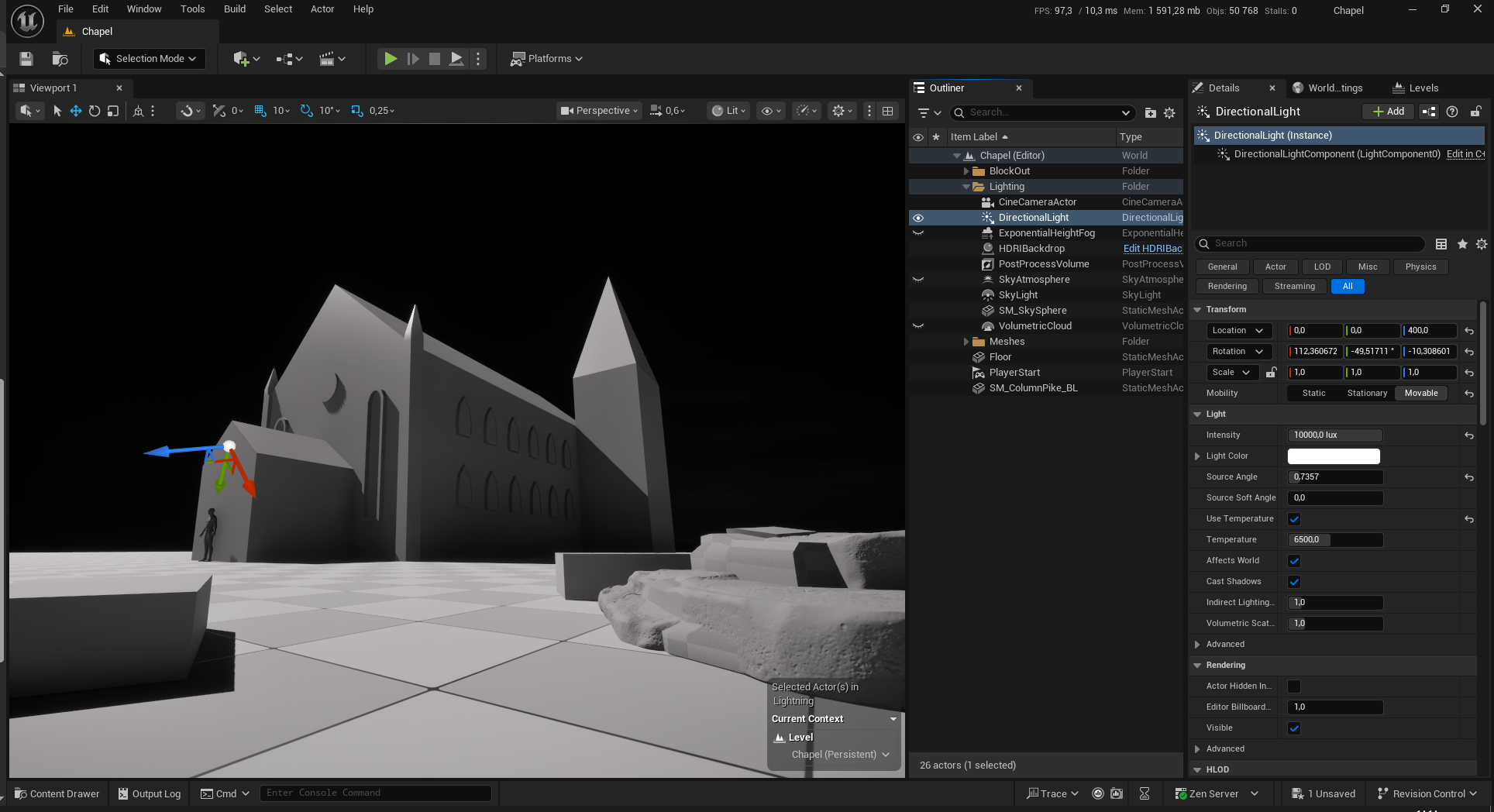The BRAWL² Tournament Challenge has been announced!
It starts May 12, and ends Oct 17. Let's see what you got!
https://polycount.com/discussion/237047/the-brawl²-tournament
It starts May 12, and ends Oct 17. Let's see what you got!
https://polycount.com/discussion/237047/the-brawl²-tournament
UE5 PBR Lightning
Hi! I've started working on a new environment for my portfolio and encountered a problem with the lighting. Lighting has always been a weak spot in my projects, and I've often heard that it's important to set it physically accurately if the environment is realistic. So, I consulted the Unity cheat sheet and decided to use 10,000 lux and EV10; however, the scene is too dark, and I can barely see the HDRI. Am I missing something?




Replies
Using real world values can sometimes cause artifacts with other features like Lumen having black spots or a grid artifact, I think this is fixed in newer versions, but something to be aware of and look out for.
Personally I wouldn't suggest going too far outside of the defaults unless you are willing to have to adjust settings for anything that touches lighting and the final image (post processing, sky/volumetric clouds, fog, etc)
you need to enable "extend luminance range..... something' in project settings > render to handle exposure when you start throwing realistic values around or it'll go wrong - badly
It's sort of viable to work with a sun in the 70-120k lux range and a moon at 0.25 lux with lumen but you're going to struggle if you have a day/night cycle that runs relatively quickly and you'll absolutely have to implement some sort of control on your exposure regardless (you might get away with just curve modifications but i wouldnt' count on it, especially if you're running in and out of buildings).
There's a lot of instability in lumen around sunset/sunrise - particularly in scenes where you have a lot of foliage/grass wobbling in the wind and it seems to worsen when you use very large (realistic) values for your sun.
None of this is a real issue when rendering stills but it looks like shit in motion.
personally - i disable lumen for large worlds. it's not worth the cost / artefacting for large, dynamic environments